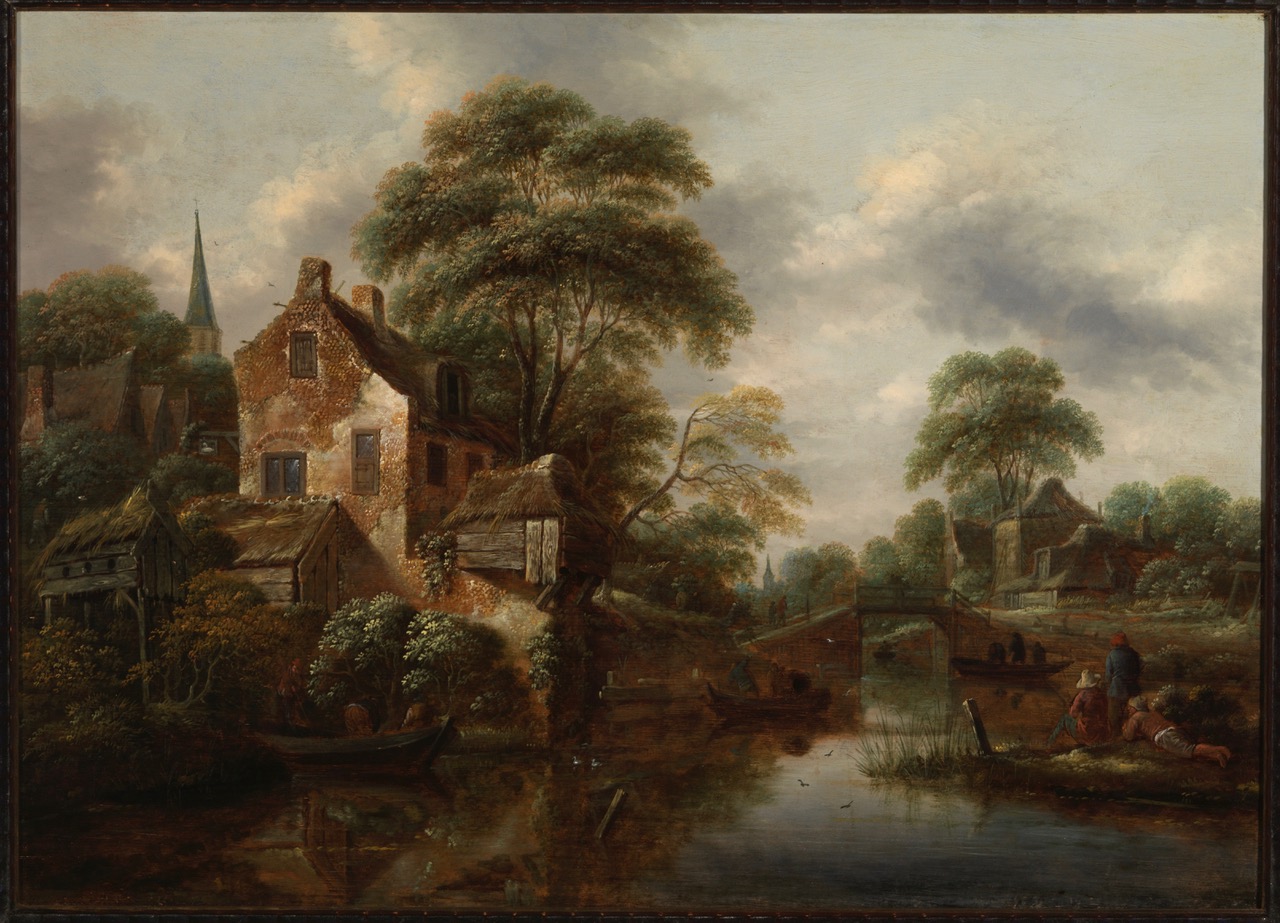
Connoisseurs of Dutch seventeenth-century painting rarely jump with excitement at the mention of the Haarlem landscape painter Nicolaes Jansz. Molenaer. His landscapes tend to be predictably mediocre; nothing to write home about. The general verdict is: if you’ve seen one Molenaer, you’ve seen them all. Yet, I was instantly impressed when I saw this painting. Everything about it seemed right: its composition, the delicate, soft colours, the reflections in the water, the sky, the figures on the riverbank in their finely coloured smocks and berets. In short, a perfect example of seventeenth-century Haarlem landscape painting.
Intrigued by the quality of the painting, I went to the Netherlands Institute for Art History (RKD) in The Hague to see what I could find. An old photograph of the painting revealed that it had once belonged the president of the Netherlands Trading Society, Dr C.J.K. van Aalst (1866-1939), who had bequeathed his house at number 502 Herengracht to the City of Amsterdam. When Van Aalst died, his impressive collection was sold by Christie’s, London. However, we can still form a good impression of it today, thanks to a catalogue compiled by J.W. von Moltke. The highlight of the collection was Rembrandt’s 'Juno', now in the Armand Hammer Museum, Los Angeles. In addition, there were important works by Hobbema, Salomon van Ruysdael and Jan Steen. Nicolaes Molenaer’s landscape is unfortunately not among the works described in Moltke’s catalogue; apparently it was not considered a key work in the collection.
The discovery of the Van Aalst provenance was important. Not only does it demonstrate that Van Aalst’s collection included the work of less well-known masters – and that he possessed a sharp eye for quality – it also confirms that this is indeed an exceptionally fine example of Molenaer’s work. In other words, the distinguished provenance provides further evidence that the painting occupies an important place within the artist’s oeuvre.
Sadly the trend nowadays is to forget minor artists and to buy only the big names, which are supposed to keep their value or, better still, become more important and therefore more valuable as time passes. But by being fixated on famous names rather than quality, you deprive yourself of many opportunities! There is much to be gained by allowing yourself to let go of the big names. Have the confidence to approach a work of art with an open mind and be guided purely by the quality of the object in front of you; you might be in for a pleasant surprise! There are true gems to be found among the work of less well-known masters. This area of the market holds many opportunities.
